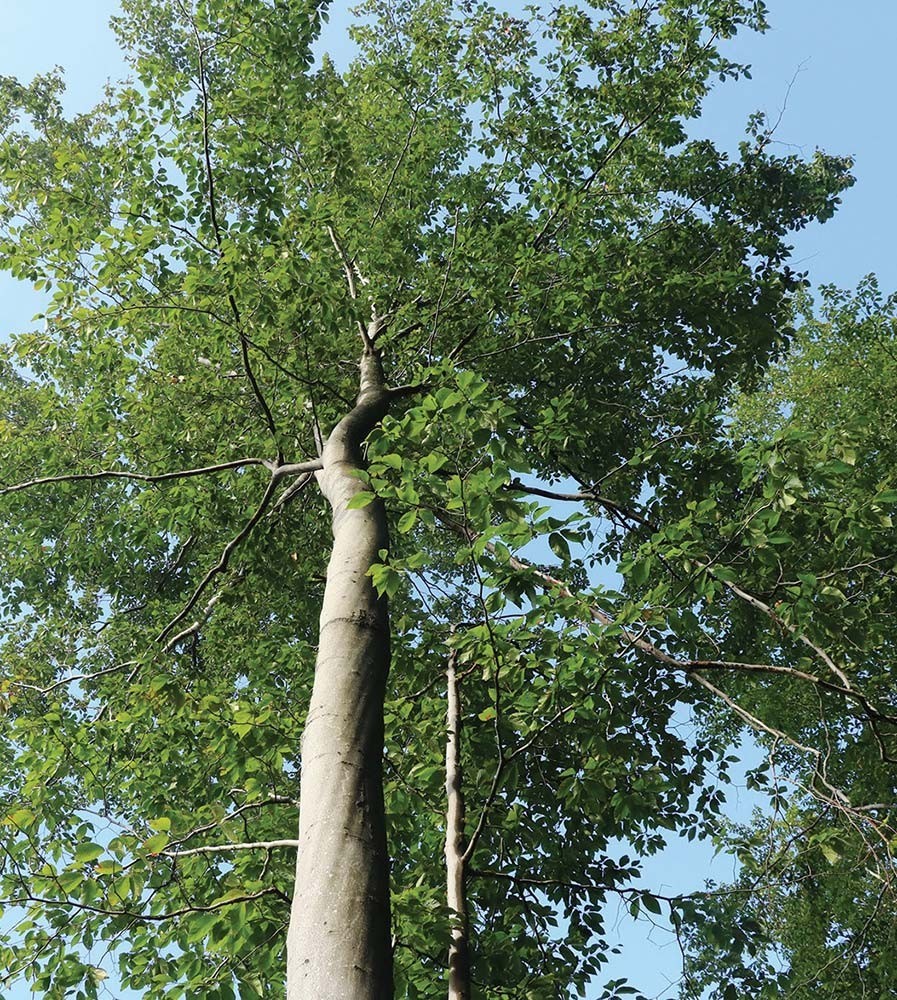
I turn off my saw and set it down on the dry duff. My heart is pounding, my shirt soaked in sweat. Around me what was once a placid forest, gently changing on the steep hillside, has been transformed into a tangled mess. As striking as it is, my eyes are drawn upward from the chaos of treetops and branches toward something undeniably hopeful: the crowns of young oak trees, their chrome bark shining in the sun, reaching into the clear, blue sky.
In the 1990s, well before my time here, the largest and most valuable trees were cut off this land, leaving a degraded forest. As a steward of this place, my goal is to promote a healthier, more diverse forest, to try to help this forest recover. However, my ability to meaningfully affect these nearly 200 acres is limited by my time and energy; if I want to have an impact, I need to set priorities and to increase my efficiency.
To do this, I use a technique called “crop tree release.” Crop tree release flips the traditional forest management paradigm on its head; instead of focusing on removing all the trees that need to go, we focus on the trees we want to grow, which we call “crop trees.” Crop trees may produce a traditional “crop” such as timber or maple sap, but they can also be trees that produce food or habitat for wildlife or that add diversity to the forest; in my degraded forest, a “crop tree” is simply any healthy tree of any species. Whether there is one crop tree or 60 crop trees per acre, we “release” them individually by removing their competitors. This helps our crop trees expand their crowns, giving them more energy to grow and stay healthy.
To achieve the full benefits of crop tree release, follow a few simple rules. First, only cut trees whose crowns are touching the crown of your crop tree. If another tree’s crown isn’t touching the crown of your crop tree leave it alone (this requires some discipline). Cut the trees whose crowns are touching the crown of your crop tree on two to four sides, depending on the species; shade-tolerant species such as sugar maple generally prefer being released on two sides, whereas more light-loving species such as white pine can be released on all four sides.
Second, get comfortable with “messiness.” Forest complexity, diversity, and irregularity (different shapes, sizes, and species of living and dead trees) are qualities that defy our sense of order and aesthetics but that support forest resilience, adaptability, and biodiversity. In addition to promoting these qualities, embracing messiness massively increases our efficiency. Instead of spending time and energy lopping up trees and treetops, I leave them un-lopped and un-piled, which actually increases their ecological benefits. Instead of trying to pull every tiny, marginal tree out of the woods, I leave some cut trees on the ground and girdle a few trees per acre to create snags. I use these time and energy savings to release more crop trees.
While my reward at the end of the day is seeing the crowns of my crop trees freed from competition, I have learned to appreciate the “mess,” including those trees that aren’t crop trees but that aren’t competing with my crop trees either. In addition to dead trees, declining and imperfect trees are normal parts of healthy forests, providing important habitat and supporting ecological processes critical to forests, from hydrology to healthy soils. I enjoy knowing that I am growing healthy crop trees while also letting forests be forests.
I walk down the hill with my chainsaw on my shoulder, the newly fallen leaves crunching under my feet. The first time I walked this land I remember seeing only a sea of unhealthy, “defective” trees. Now when I look through the forest, I see healthy, beautiful trees just waiting to be released. Although there are countless acres to be covered, I am hopeful. In the midst of everything we’re managing against it can be hard to remember what we’re fighting for. Crop tree release is about being proactive rather than reactive, about using the small amount of time, energy, and power we have to thoughtfully and efficiently build a better world.

